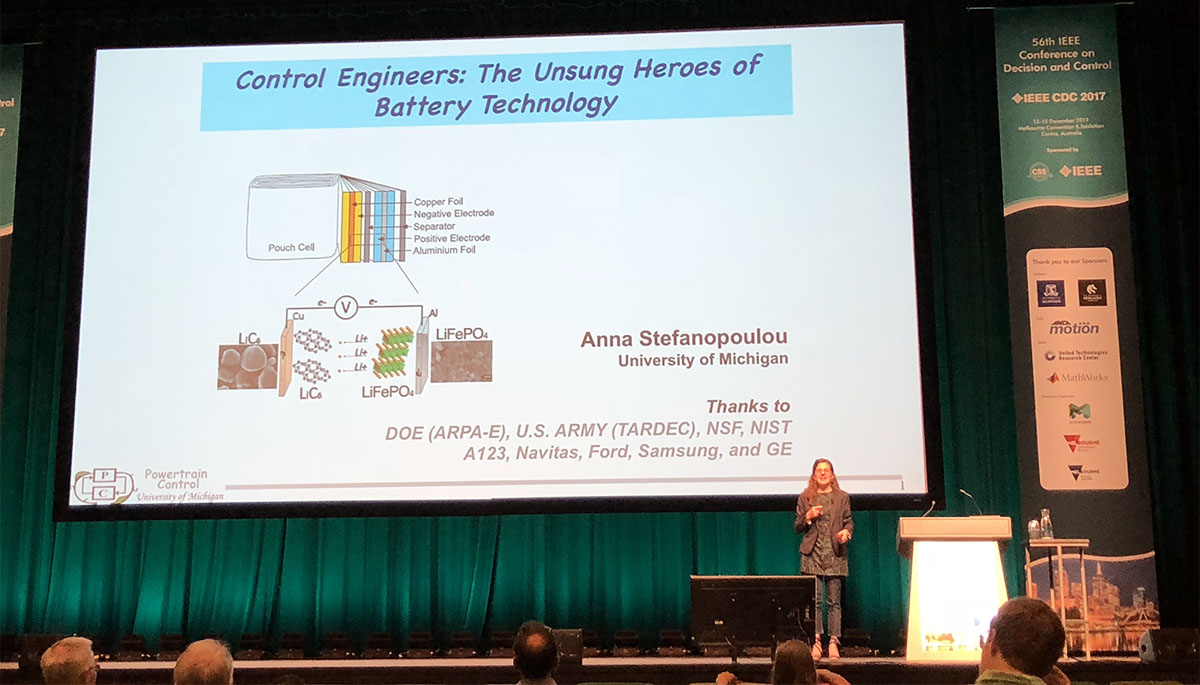
The CDC is recognized as the premier scientific and engineering conference dedicated to the advancement of the theory and practice of systems and control. The CDC annually brings together an international community of researchers and practitioners in the field of automatic control to discuss new research results, perspectives on future developments, and innovative applications relevant to decision making, systems and control, and related areas.
Anna Stefanopoulou presented her Plenary on “Control Engineers: The Unsung Heroes of Battery Technology” explaining the importance and difficulties in battery management systems. The plenary abstract was “The 25th anniversary of the commercialization of lithium-ion batteries marks their wide-spread use in handheld consumer electronics and coincides with a period of intense efforts for powering electric vehicles. Managing the potent brew of lithium ions in the large quantities necessary for vehicle propulsion is anything but straightforward. Designing the complex conductive structure, choosing the electrode material for locking the energy in high potential states and synthesizing the interfaces for releasing the chemical energy at fast, but controllable rates has been the focus of the electrochemists and material scientists. But, from the Rosetta-Philae spacecraft landing three billion miles away from Earth to the daily commute of a hybrid electric automobile, the control engineers behind the battery management system (BMS) have been the unsung heroes. The BMS is the brain of the battery system and is responsible for State of Charge (SOC), State of Health (SOH) and State of Power (SOP) estimation while protecting the cell by limiting its power. The BMS relies on accurate prediction of complex electrochemical, thermal and mechanical phenomena. This raises the question of model and parameter accuracy. Moreover, if the cells are aging, which parameters should we adapt after leveraging limited sensor information from the measured terminal voltage and sparse surface temperatures? With such a frugal sensor set, what is the optimal sensor placement? To this end, control techniques and novel sensors that measure the cell swelling during lithium intercalation and thermal expansion were presented and Stefanopoulou concluded by highlighting the fundamental difficulties that keep every battery control engineer awake, namely predicting local hot spots, detecting internal shorts, and managing the overwhelming energy released during a thermal runaway.”
The IEEE CDC is hosted by the IEEE Control Systems Society (CSS) in cooperation with the Society for Industrial and Applied Mathematics (SIAM), the Japanese Society for Instrument and Control Engineers (SICE), and the European Union Control Association (EUCA).
